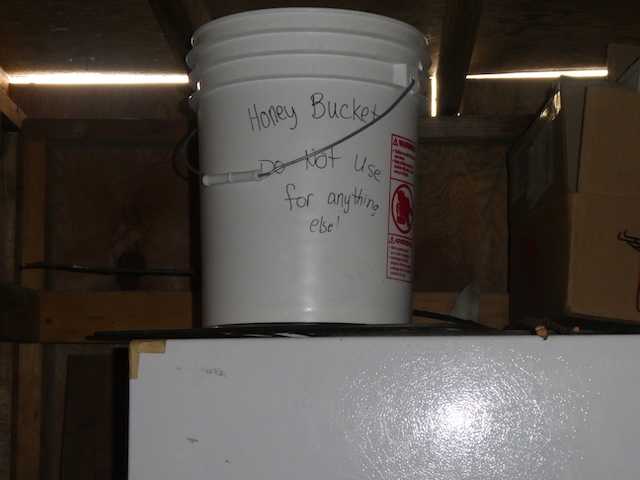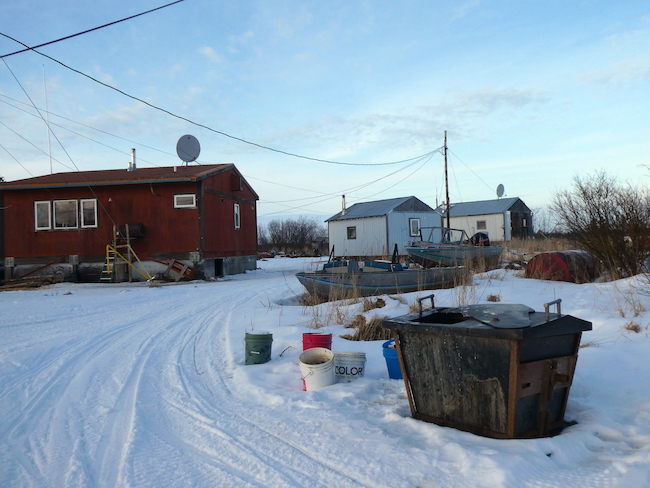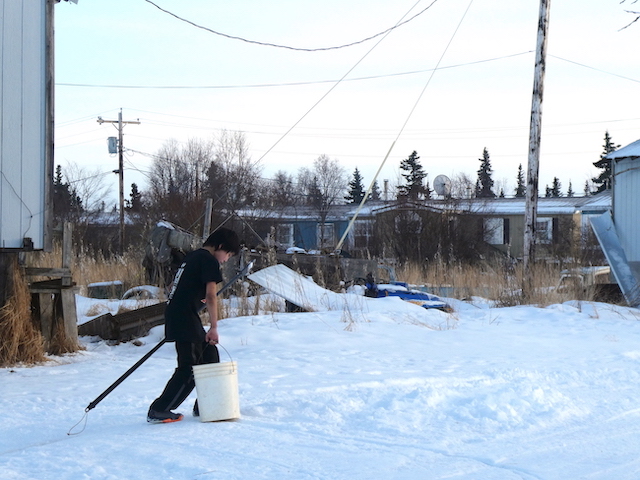First, thanks for reading. Please feel free to use the comments to ask questions, or even send me on missions. If you have curiosity inside of you about something I can tell or show you from here, let it out!
Second, holy cow I’ve been busy! Every day that passes would give me at least three blog posts worth of stuff to write about, and leaves me at the end of the day with my head spinning. Don’t forget I’m also supposed to be writing reports for work, too! But I’ve got to get these posts out – so here you go!
Today, let’s talk a little about honeybuckets. Honeybuckets are what you use when you don’t have a flushing toilet. They are always 5 gallon pails. At some point, the buckets are dumped into receptacles that are along the road or paths of the village. I’m guessing having to dump the honeybucket is the chore assigned to the child who is in the most trouble that day. At some point, the village comes by and empties the receptacles. The waste then gets dumped into a sewage lagoon, which is basically a shit pond some distance from the village.

This is my honeybucket, located in my arctic entry. Just in case the pipes freeze here and at the school (which they did over winter break!)
I was just speaking to a young Yupik man who remarked that when he was little, every village, it seemed, still used honeybuckets. Now Tuluksak is one of maybe five villages in Alaska that does not have a sewage system for the primary residents of the village. Note I say primary residents. Every village school in Alaska has its own power, water, and sewage facilities. Most of the time, these facilities also extend to teacher housing.

Here’s a honeybucket receptacle, plus bonus buckets. The big receptacles are full because the sewage is frozen and can’t be emptied.
This creates kind of a caste system. I’ve got water, a shower, a washing machine, and a flushing toilet. My neighbor has to get water either from the river or pay for it at the washeteria (more coming on that). If my neighbors want a shower, they’ll have to also pay for that at the washeteria or maybe sneak in and use the school locker room’s showers during open gym. The other option here is to sweat it out in a maqi, or steam bath. This works very well, and many folks prefer it to a shower.

This young man is hauling water up from the Tuluksak river. That pole in his other hand is used to break new ice that has formed over the water hole.
One time during a cultural immersion camp we were working with about 20 youth from this area, staying for a couple weeks at the University of Alaska dorms. Some of the students opined that, though they were taking showers every day, they felt dirty without a maqi.
Oh boy, the wahseteria. It is in great disrepair. The expectation has been that it would be replaced, or become unnecessary, for almost the past 10 years. But, for one reason or another, the water and sewer here hasn’t been completed for village use, and the washeteria has never been replaced. It’s become a significant issue, not just for convenience, but for health reasons.
The local water, whether from the river or wells that have been drilled here and there, is high in naturally occurring arsenic, iron, and manganese. It’s got a lot of particulate matter in it, and will discolor laundry. The treated water that you pay for at the washeteria is so discolored folks prefer the slightly less-brown river water!
There are MANY agencies that are focused on helping this village get clean water, including two native health corporations, two tribal corporations, and several government agencies. The big steps for having a water and sewer system require the village – really the Tuluksak Native Community (the name for their tribal government) – to make some things happen. I’m going to try to help connect some dots and do some strategic pushing and pulling to help.